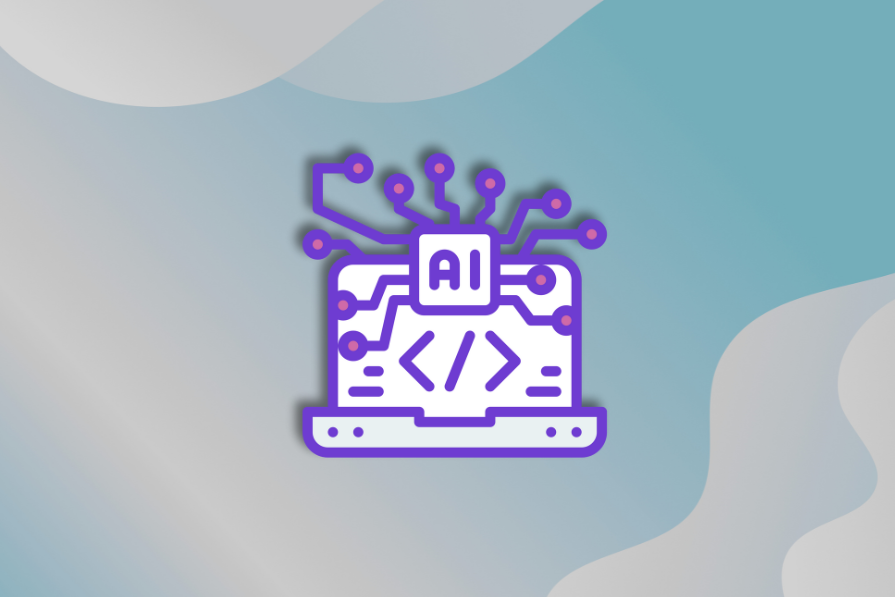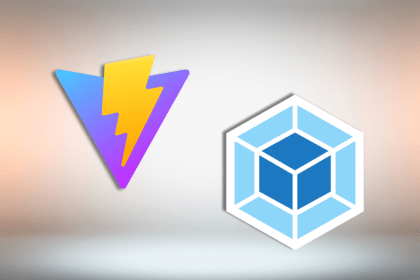
As a frontend developer, integrating AI into your app can be exciting — whether you’re building chatbots, document search, or intelligent assistants. But beyond the hype, your AI strategy directly shapes the user experience.

Think about it this way: when you decide between using a REST API versus GraphQL, that choice ripples through your entire frontend architecture, affecting everything from data fetching patterns to caching strategies. The same principle applies when choosing between fine-tuning and Retrieval-Augmented Generation (RAG) for your AI-powered features.
Consider a practical scenario of building a customer support dashboard where users can ask questions about your company’s products. If you choose fine-tuning, your users might experience lightning-fast responses with consistent tone, but updating the AI’s knowledge about new products could require days or weeks of retraining.
Choose RAG instead, and you can update information instantly. But now, you’re managing loading states for document retrieval, handling potential latency from multiple API calls, and designing interfaces that gracefully handle cases where relevant information isn’t found.
In this article, we’ll help you make informed decisions about AI integration by breaking down two core approaches: fine-tuning and retrieval-augmented generation (RAG). We’ll focus on how these strategies impact real-world UI, performance, and design patterns — so you can build smarter, more seamless frontend experiences.
The Replay is a weekly newsletter for dev and engineering leaders.
Delivered once a week, it's your curated guide to the most important conversations around frontend dev, emerging AI tools, and the state of modern software.
| Aspect | Fine-tuning | RAG |
|---|---|---|
| Approach | Modifies model parameters through training on domain-specific datasets | Maintains external knowledge base with dynamic retrieval during inference |
| Performance | Fast, consistent response times; single inference step | Variable latency due to multi-step process (retrieval + generation) |
| Knowledge updates | Requires complete retraining cycle (hours to days) | Instant updates through document upload and re-indexing |
| Best use cases | Specialized terminology, consistent voice/brand, static knowledge domains | Dynamic information, private data, frequently changing content |
| Frontend complexity | Simple loading states, predictable caching, versioned deployments | Multi-step progress indicators, complex caching, real-time content management |
| Resource requirements | High upfront training costs, larger model files | Lower training costs, ongoing retrieval infrastructure |
| Maintenance overhead | Periodic retraining cycles, version management | Continuous content curation, embedding management |
| Error handling | Predictable failure modes, consistent behavior | Multiple failure points, variable response quality |
Before we dive into implementation strategies and frontend considerations, let’s build a clear mental model of what fine-tuning and RAG actually do. Think of these as two fundamentally different approaches to making an AI model smarter about your specific domain or use case.
Fine-tuning takes a pre-trained language model and continues its training process using your specific dataset. This approach fundamentally modifies the model’s internal parameters — the mathematical weights determining how it processes and generates text.
For example, fine-tuning a model on legal documents adjusts its neural network to naturally use legal terminology, reasoning patterns, and stylistic conventions, not just access legal information.
The parameter modification process involves several methodologies. Full fine-tuning adjusts every parameter, offering maximum customization but demanding substantial computational resources and large datasets.
More practical for many projects is Parameter-Efficient Fine-Tuning (PEFT), which includes techniques like LoRA (Low-Rank Adaptation) that modify only a small subset of parameters, preserving general capabilities while specializing the model. From a frontend perspective, once training is complete, the model behaves as if it inherently knows your domain. There’s no external lookup or retrieval delay; the model draws from its internalized knowledge for consistent responses.
RAG operates differently, separating knowledge storage from its application. Instead of modifying model parameters, RAG maintains domain-specific information in an external knowledge base, retrieving relevant pieces dynamically.
The RAG process has two phases impacting your frontend. First, during document processing (often offline or during uploads), documents are broken into smaller, digestible chunks suitable for the model’s context window. Each chunk is transformed into a semantic embedding, a mathematical representation of its meaning, enabling similarity-based searching.
The second phase occurs during user interaction. A query triggers a semantic search across the embedded knowledge base for the most relevant chunks. These chunks are then injected into the language model’s context with the user’s question, allowing the model to generate responses grounded in your specific data.
From a frontend developer’s view, RAG introduces a multi-step process (document retrieval, relevance ranking, context assembly, and then generation), creating unique UX challenges. Unlike fine-tuning’s single inference step, each RAG step can add latency. This fundamental difference between knowledge baked in (fine-tuning) and externally accessed (RAG) has cascading effects, influencing why certain projects suit one approach over the other.
Fine-tuning is optimal when your project requires deep, consistent adaptation to specialized domains where the model must internalize specific patterns of thinking and communication.
Let’s start with projects that require adaptation to very domain-specific terminology and language nuances. Consider a medical diagnostic assistant for radiologists. The AI must understand subtle distinctions, use precise terminology naturally, and mirror clinical reasoning. A fine-tuned model trained on radiology reports will grasp the implications of terms like “ground-glass opacity with peripheral distribution.” This translates to user experiences feeling expert-level, allowing professionals to communicate efficiently.
Situations involving specialized tasks that demand a highly consistent voice and/or personality. For a brand-specific customer service interface, consistent tone and policy interpretation are vital. A model fine-tuned on your customer service interactions will naturally adopt your brand’s style and understand specific policies. This predictability also benefits frontend caching and optimization, as response patterns are more consistent.
There are also scenarios with relatively static knowledge bases where the cost of occasional retraining is justifiable. Consider legal document analysis for a specific law area or technical documentation for mature, infrequently updated products. When the knowledge domain changes slowly, fine-tuning’s upfront investment offers consistently fast responses and deep domain expertise.
However, fine-tuned models come with trade-offs. Updating them typically requires a full retraining cycle, which can take hours — or even days — depending on your dataset and infrastructure. This makes rapid iteration difficult and limits your ability to keep content fresh.
On the frontend, you’ll need to account for model versioning and clearly communicate knowledge cutoff dates to users to manage expectations. While inference performance is generally fast, larger model files can slow down deployment and increase cold start times, especially in serverless environments. These operational constraints make fine-tuning less ideal for dynamic content or fast-moving use cases.
RAG is the clear choice when success depends on access to dynamic, frequently changing information, or when flexibility to update knowledge without costly retraining is paramount.
There are project requirements that necessitate access to private or frequently changing information sources. For example, take an internal knowledge system in a fast-growing startup with evolving documentation and policies. RAG excels because updates (new feature specs, HR policy changes) are instantly available without retraining. Frontends can display source documents, verify information freshness, and even allow direct updates. This transparency builds user trust.
RAG also excels in situations demanding rapid knowledge updates without the need for full model retraining cycles. Customer support systems that need to incorporate new product features or troubleshooting procedures benefit from RAG. Instead of manual searches, RAG-powered interfaces can instantly surface relevant information. Content management workflows can allow experts to update knowledge bases directly, with the frontend showing indexing status and previewing changes.
What if we can explore a hybrid approach — instances where fine-tuned models can significantly benefit from integrating RAG capabilities?
A common hybrid approach is to fine-tune a model on general domain knowledge and terminology, while using RAG to surface current or context-specific information. This combines the consistent tone and reasoning of fine-tuning with the adaptability of RAG. However, these setups require more sophisticated frontends — ones that can clearly distinguish between model responses based on internal knowledge and those retrieved from external sources. This might include showing confidence levels, citations, or source indicators.
Choosing RAG also means embracing a more complex frontend architecture. You’ll need to account for multi-step processes, potential failures, and variable response times. And since RAG performance depends heavily on the quality of the underlying knowledge base, it often requires robust content management tools to keep things organized and up to date.
Building a RAG-powered frontend introduces architectural decisions that go beyond traditional web apps, with unique challenges in state management, user feedback, and content organization.
Having a robust knowledge base management is foundational to your RAG project. Content needs optimization for semantic search and AI consumption. There are two stages in your RAG workflow that you should always have in mind:
Using RAG introduces unique security challenges. Since your AI can potentially access and reveal information from any document in your knowledge base, your frontend must implement robust access controls and data handling practices to prevent unauthorized information disclosure.
The success of your AI-powered application doesn’t just depend on the sophistication of models used, but also on how effectively your interface manages user expectations, provides feedback during processing, and maintains engagement throughout multi-step AI workflows. Let’s explore some thoughtful frontend considerations to improve your user experience.
RAG’s multi-step process (search, rank, assemble, generate) makes managing perceived performance key, as each step introduces potential latency and failure points that your interface needs to handle gracefully. Let’s discuss a few points to consider when loading states:
AI responses vary in length, quality, and format. Interfaces must handle this gracefully, especially for real-time features like streaming responses or interactive query refinement.
AI applications need good caching strategies for both document retrieval and generated content, balancing freshness with performance. Let’s look at both document and response caching:
Choosing between fine-tuning and RAG isn’t just a backend decision — it directly impacts your frontend architecture, UI patterns, and security model. Fine-tuning offers speed and consistency, ideal for stable domains and streamlined interfaces. RAG brings flexibility and up-to-date information, but requires more complex frontend logic to manage multi-step flows, latency, and source transparency.
Understanding these trade-offs early helps you design AI experiences that feel seamless and intentional. By mapping the user journey and anticipating edge cases, you can deliver frontend experiences that are both technically sound and user-friendly.

children correctly in TypeScriptLearn modern best practices for typing React children in TypeScript, including ReactNode, PropsWithChildren, ComponentProps, and why React.FC is no longer recommended.

Learn how to internationalize Next.js apps with Lingui and next-intl, covering App Router, RSC, routing, locale detection, and dynamic language switching.

Vite vs Webpack in 2025: a senior engineer’s take on performance, developer experience, build control, and when each tool makes sense for React apps.

Learn how Vitest 4 makes migrating from Jest painless, with codemods, faster tests, native ESM, browser testing, and a better DX.
Would you be interested in joining LogRocket's developer community?
Join LogRocket’s Content Advisory Board. You’ll help inform the type of content we create and get access to exclusive meetups, social accreditation, and swag.
Sign up now